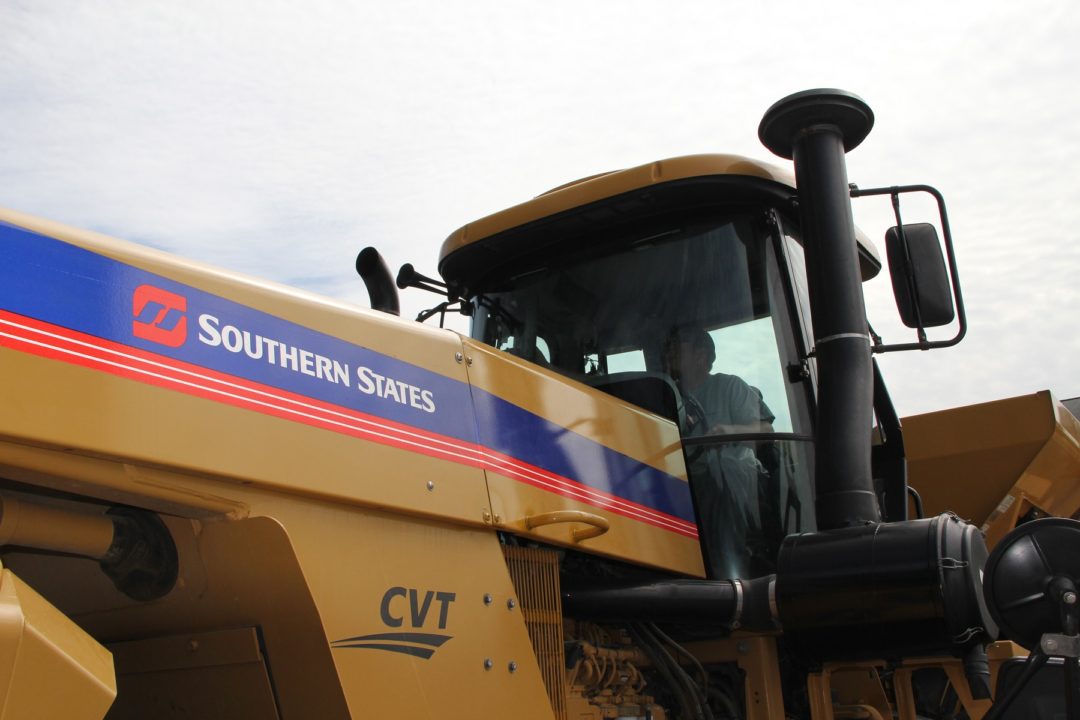By Chris Carter, Communications Coordinator, Southern States Cooperative, Inc.
Precision agriculture has many benefits, but the results are only as good as the data provided. Yield monitors and GPS receivers can reveal much about a field's performance at harvest time and give you a leg up on boosting yields. Unfortunately, problems can arise that may reduce the accuracy of yield data - and this can affect your precision ag program. You can ensure your yield data is correct and complete by employing certain practices before, during, and after the corn and soybean harvests.
Pre-harvest
With a time-sensitive operation like harvest, it's best to have your yield monitoring equipment ready in advance. Southern States Cooperative senior precision ag program planner Marlin Melander advises growers to start preparations a week or two before harvest begins. "Growers should make sure sensors, cables and GPS receivers are all up and working well," Melander says.
In addition to checking the electronics, farmers should accurately calibrate their combine's yield monitor. "Accurate calibration for a combine is a must when gathering yield data," notes Melander, who helps growers with calibration. "Calibrate before each different crop is harvested."
Many farmers might not realize that their yield monitoring system might have updates that need to be run before they operate for the current season. Making sure that the system has the latest updates will enhance system performance and accuracy. Take the time to run updates before you send the monitor out in the field for the most accurate results.
During harvest
As a harvester goes through a field, the yield monitor's sensors determine the weight and moisture of the harvested product while the GPS records location. Growers can use this data to not only see how a field performed in the current year, but how they can farm more productively in the future.
To verify that the equipment works properly, Melander recommends checking the recorded data after the first day of harvest. "Make sure the data is saving and the monitor is working correctly," Melander says. "You don't want to think you are recording through a whole corn harvest only to discover afterwards you haven't recorded anything."
Post-harvest
All of the data that has carefully been recorded now needs to be analyzed. The maps will reveal what areas perform better than others, but determining why might pose a problem.
Southern States helps growers analyze the maps and solve the puzzle of why certain areas produce more than others.
"Our precision ag group provides advice on yield data and any adjustments needed for a farm to perform better," Melander says. "We understand that higher cost supplies might not be economically feasible, so instead of looking only at increasing yield, we focus on maximizing the economic yield of the operation."
Keep your data
Hanging on to your yield data from years past might seem unnecessary, but experts are learning more from historical data than ever before. "I recommend archiving yield data," Melander says. "We see more now from the data from years past than we did at the time, so who knows what we'll be able to see in the future?"
Capturing accurate data can help your operation perform better now and in the future. For more information on precision agriculture and yield data, visit southernstates.com/precision.
Southern States Cooperative is a Richmond, Virginia-based farm supply retailer and service cooperative. As one of the nation's largest agricultural cooperatives, it provides a wide range of farm inputs, including fertilizer, seed, livestock feed, pet food, animal health supplies, and petroleum products, as well as other items for the farm and home. Founded in 1923, the cooperative is owned by more than 200,000 farmer-members, and serves its members and non-member customers through 1,200 retail outlets in 23 states.
For more information, visit www.southernstates.com






